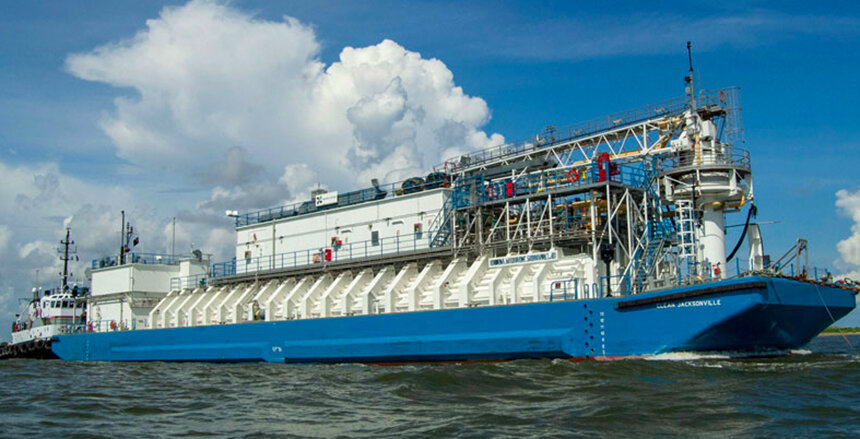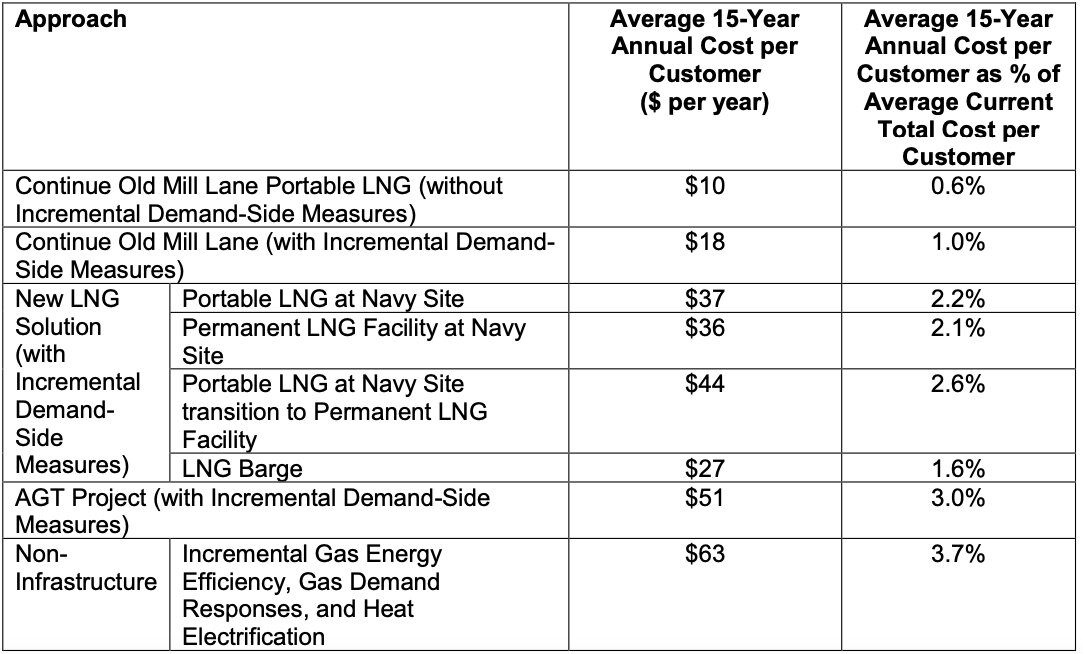National Grid Promotes Aquidneck Island Fossil Fuel Heating Options
October 26, 2020
AQUIDNECK ISLAND, R.I.— National Grid is considering four options to reduce the risk of another natural-gas outage and to meet, what the corporation says, is the three municipalities’ rising demand for heat.
The January 2019 incident knocked out natural-gas service to 7,455 customers for seven days. National Grid and the pipeline owner Enbridge, based in Alberta, are being sued by Newport residents and businesses for failing to prevent the crisis. The breakdown is blamed on a faulty pipeline valve in Weymouth, Mass., and a power failure at a liquefied natural gas (LNG) facility in Providence, according to an October 2019 report by the Rhode Island Division of Public Utilities and Carriers (DPUC).
A new report by National Grid suggests building long-term natural-gas infrastructure and services to avoid another shutdown. The London-based multinational also noted that such expansion would address the expected growth in natural gas customers in Portsmouth, Middletown, and Newport.
The least-expensive option, at least in terms of cost to ratepayers, is maintaining a seasonal LNG storage and vaporization facility on Old Mill Lane in Portsmouth. The collection of tanker trailers was established last winter but the fuel was never injected into the natural gas pipeline because of mild temperatures.
The facility, which operates December through March, has drawn criticism from neighbors over safety, noise, and excessive lighting. During an Oct. 14 online public presentation, National Grid explained that the risk of storing LNG in trailers is low. As a liquid, natural gas is easy to ship, taking up a fraction of the space. The last explosion of an LNG storage tank was in Cleveland in 1944, noted Brian Schuster, director of community relations for National Grid in Rhode Island. Although 130 people died in that incident, safety standards have improved significantly, he said.
“LNG is a safe operation,” Schuster said. ”We take safety first no matter what we do.”
National Grid’s experts promised that the loud venting, called blowdowns, will only happen during business hours at Old Mill Lane. They said the noise from generators was eliminated after the site was connected to the regional power grid. They said new landscaping around the site has curtailed unpleasant lighting in the mostly residential neighborhood.
Last month National Grid filed a petition with the Rhode Island Energy Facility Siting Board (EFSB), seeking an exemption from having the Old Mill Lane vaporization operation classified as a major energy facility. In 2019, the EFSB granted National Grid a two-year waiver to operate the facility without having to define the legal jurisdiction of the operation.

National Grid’s 127-page Aquidneck Island report looks at more controversial options such as building a new natural gas pipeline next to Enbridge’s existing Algonquin pipeline that services Aquidneck Island. A new pipeline would also run 4 miles longer than the existing pipeline.
A newer approach is to store and vaporize LNG on a special barge anchored a few miles offshore and run natural gas through a submerged pipeline to the mainland. A much larger offshore LNG storage and vaporization facility uses a 16-mile pipe to run natural gas to Boston.
Building a permanent or portable LNG storage and vaporization facility on property owned by the Navy on Aquidneck Island is also a consideration. National Grid previously operated a temporary vaporization facility on Navy-owned land but had to move after the Navy had other plans for the site. A new Navy property could also host a hydrogen production facility, where the low-carbon gas could be injected into the existing pipeline, according to National Grid.
Rhode Island has permanent LNG facilities in Providence and Exeter. A temporary facility is in Cumberland.
Questions from the public during the recent meeting sought greater attention to safety and the environment. Most concerns referred to the potential risks associated with the 5-acre Old Mill Lane facility, which is owned by National Grid. Emergency management experts noted the extensive planning done with local fire departments. All LNG truck deliveries, they noted, travel preplanned routes, which are shared with first responders.
The September report doesn’t consider a moratorium on new natural-gas connections as an option, although there were several questions asked at the meeting about the idea of capping the fossil fuel’s use.
National Grid’s Schuster claimed there would be opposition to a moratorium on natural gas hookups and that having one could be a deterrent to economic development.

Relying on electrification of heating and weatherization to meet and reduce demand for heat on Aquidneck Island would be the most expensive for ratepayers, costing about $190 million, according to National Grid’s report. A new pipeline is the next most expensive, at $147 million. An LNG barge costs about $79 million. A new site on Navy-owned land would cost $108 million, while maintaining the Old Mill Lane facility costs $31 million.
“The options that we’re presenting tonight we believe are the most prudent and responsible options overall for truly long-term and enduring energy solutions,” Schuster said.
However, during an Oct. 26 presentation to the Portsmouth Town Council, Schuster said National Grid does not want to use Old Mill Lane as a long-term option and hopes to cease operations there after two or three more winters.
With the exception of Old Mill Lane, all of the options and costs include various levels of ramping up programs and incentives for electric heat pumps, weatherization, and other methods for reducing carbon fuels.
At the Oct. 26 Portsmouth online meeting, Town Council member Keith Hamilton was the lone member to speak in favor of one of the options.
“It seems to me that the only real, viable, long-term solution for this is a new pipeline for the island,” Hamilton said.
Temporary sites won’t solve the problem of the need for a looped distribution system, he said. A new pipeline, he added, would also benefit the 272-megawatt natural gas power plant in Tiverton.
A moratorium on new natural gas hookups, Hamilton said, defeats the long-term goal “of mitigating any long-term issues for climate change because people may just turn around and say, ‘Well the price of oil today is a lot less expensive than heat pumps,’ so they may go with oil. … We may end up hurting ourselves in the long run for a short-term solution.”
Comments on the study can be submitted to National Grid online until Dec. 1. National Grid will then put forth a preferred option for the DPUC to consider.
“Let us know what you think,” Schuster said. “Let us know what you want for a future energy option.”
National Grid is expected to present the Aquidneck Island natural-gas plan to the Middletown Town Council on Oct. 27 at 7 p.m. The meeting will be broadcast online and questions from the public will be taken.



